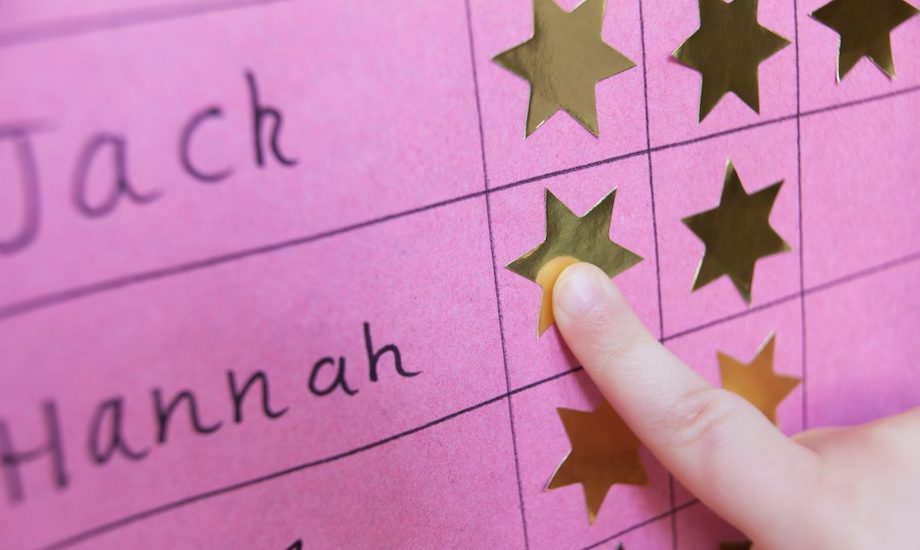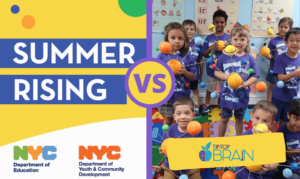I’d bet your child has come home with a “star chart” or stories of tokens they earned for exemplary behavior in class, whether it be academic or otherwise. Class reward systems work remarkably well at motivating children, remarkably quickly. Luckily, in the age of distance learning, parents can reap the benefits of a reward system to motivate their child’s studies from home.
No less, the utility of reward systems is not lost on older students. Reward systems draw strength from a dimension of student motivation referred to as “interest/value,” which can be leveraged to the advantage of students and parents alike.
Pre-K & Kindergarten
Kindergarten age students are enamored with sticker charts. At home, your child can decorate a poster board or oaktag with a chart layout outlined. You could go for simple calendar design or create tiers for collecting a certain number of stars (e.g. 0-99, 100-199.) To sweeten the pot, let them choose their stickers. Although the privilege of choosing stickers is often lost on adults, little ones do not take it lightly. In the long run, your child loving their chosen sticker will only increase their motivation to earn them.
Now that you have your infrastructure established, there are a few musts to sticker charts:
- Make sure the sticker chart is visible to your child. As they say, you’ve got to keep your eye on the prize. Young learners will be reminded of the chart when they glance upon it and seek to earn stickers by modeling sticker-earning behavior.
- Clearly define behaviors and achievements that earn stickers. In order to encourage and reward the behaviors you’re working towards; your child will need to know what they are. You could even create a score sheet to make sticker-worthy behavior’s clearer (e.g. 2 rows of homework problems = 1 sticker).
- Be consistent. If your child feels as though they receive stickers at random, they’re unlikely to abide by any sort of behavior to earn them. Once you communicate how stickers are earned (e.g. “For every 5 problems you complete,” “Putting away your schoolwork,”) you can be sure they will.
Elementary School
As children grow up, the sleek luxury of stickers loses its appeal. By grade school, kids have set their sights higher, and rewards like stickers don’t motivate students quite as much. It’s worth identifying what privileges or tangible rewards motivate your child.
You might want to begin by simply asking students what rewards they might be willing to work for. When first trying out a reward system, your student needs to see it delivers, so start out small. A large payout like a new gadget or toy should take a while to work up to. If you want your student to invest in the reward system, the first reward should come soon after, so students recognize the ability to see the efforts pay-off.
At this age, small knick-knacks and toys can go a long way. Smaller prizes serve children well because they can receive them more often. After all, the reward system’s efficacy is contingent on frequent and predictable positive reinforcement. Once the purpose and efficacy of the reward system is clear, you can begin to add longer term rewards, hence, bigger prizes. If you’re unsure what small-prizes would fit the bill, amazon has toys and games organized by age-level. The evolution of the reward system and growth of the prizes will be sure to keep your child’s attention.
Middle School & Up
Reward systems for older students tend to look really different from their younger counterparts. No longer do small prizes grab student’s attention, and if they do, it’s unlikely to be held for long. More often, older students are motivated by rewards in the form of privileges. For instance, your child may want to earn additional television time each night, or simply a later bedtime. At this age, it’s important to make sure you and your student have clearly defined the terms of your agreement, and that the system is fair and worthwhile.
When reward systems are properly implemented, the effects can seem magical. The positive reinforcement of the habits you’re hoping to instill can quickly crystallize routines for students. No less, the excitement of prizes and rewards adds a fun and practical finish line for children. If you feel like your reward system is falling flat, don’t fret, it can take time for your new system to become seamless. If the reward system seems to be missing something, it’s likely a consequence of inconsistent use, or unclear expectations.
All in all, an at-home reward system is fairly easy to sustain and serves everyone. However, getting started can be tricky. Tip Top Brain has successfully implemented reward systems in their learning center, so in hopes to share their success, you can connect with learning center’s director for an appointment to design your own system. The only thing left to sort out is which stickers or rewards your student wants!







